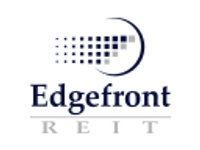
Nexus Industrial REIT
TSX:NXR.UN


| US |

|
Johnson & Johnson
NYSE:JNJ
|
Pharmaceuticals
|
| US |

|
Berkshire Hathaway Inc
NYSE:BRK.A
|
Financial Services
|
| US |

|
Bank of America Corp
NYSE:BAC
|
Banking
|
| US |

|
Mastercard Inc
NYSE:MA
|
Technology
|
| US |

|
UnitedHealth Group Inc
NYSE:UNH
|
Health Care
|
| US |

|
Exxon Mobil Corp
NYSE:XOM
|
Energy
|
| US |

|
Pfizer Inc
NYSE:PFE
|
Pharmaceuticals
|
| US |

|
Palantir Technologies Inc
NYSE:PLTR
|
Technology
|
| US |

|
Nike Inc
NYSE:NKE
|
Textiles, Apparel & Luxury Goods
|
| US |

|
Visa Inc
NYSE:V
|
Technology
|
| CN |

|
Alibaba Group Holding Ltd
NYSE:BABA
|
Retail
|
| US |

|
JPMorgan Chase & Co
NYSE:JPM
|
Banking
|
| US |

|
Coca-Cola Co
NYSE:KO
|
Beverages
|
| US |

|
Walmart Inc
NYSE:WMT
|
Retail
|
| US |

|
Verizon Communications Inc
NYSE:VZ
|
Telecommunication
|
| US |

|
Chevron Corp
NYSE:CVX
|
Energy
|
Utilize notes to systematically review your investment decisions. By reflecting on past outcomes, you can discern effective strategies and identify those that underperformed. This continuous feedback loop enables you to adapt and refine your approach, optimizing for future success.
Each note serves as a learning point, offering insights into your decision-making processes. Over time, you'll accumulate a personalized database of knowledge, enhancing your ability to make informed decisions quickly and effectively.
With a comprehensive record of your investment history at your fingertips, you can compare current opportunities against past experiences. This not only bolsters your confidence but also ensures that each decision is grounded in a well-documented rationale.
Do you really want to delete this note?
This action cannot be undone.

| 52 Week Range |
6.15
8.22
|
| Price Target |
|
We'll email you a reminder when the closing price reaches CAD.
Choose the stock you wish to monitor with a price alert.

|
Johnson & Johnson
NYSE:JNJ
|
US |

|
Berkshire Hathaway Inc
NYSE:BRK.A
|
US |

|
Bank of America Corp
NYSE:BAC
|
US |

|
Mastercard Inc
NYSE:MA
|
US |

|
UnitedHealth Group Inc
NYSE:UNH
|
US |

|
Exxon Mobil Corp
NYSE:XOM
|
US |

|
Pfizer Inc
NYSE:PFE
|
US |

|
Palantir Technologies Inc
NYSE:PLTR
|
US |

|
Nike Inc
NYSE:NKE
|
US |

|
Visa Inc
NYSE:V
|
US |

|
Alibaba Group Holding Ltd
NYSE:BABA
|
CN |

|
JPMorgan Chase & Co
NYSE:JPM
|
US |

|
Coca-Cola Co
NYSE:KO
|
US |

|
Walmart Inc
NYSE:WMT
|
US |

|
Verizon Communications Inc
NYSE:VZ
|
US |

|
Chevron Corp
NYSE:CVX
|
US |
This alert will be permanently deleted.
Nexus Industrial REIT
Nexus Industrial REIT operates as a real estate investment trust. The company is headquartered in Oakville, Ontario and currently employs 19 full-time employees. The company went IPO on 2012-11-26. The REIT is focused on increasing unitholder value through the acquisition of industrial properties located in primary and secondary markets in Canada and the United States, and the ownership and management of its portfolio of properties. Its owns a portfolio of approximately 109 properties comprising approximately 10.7 million square feet of gross leasable area. Its industrial properties include 5 Cuddy Boulevard, 11250-189 Street, 3501 Giffen Road North, 10774-42 Street SE and 261185 Wagon Wheel Way. Its office properties include 127-145 Rue Saint-Pierre, 360 Rue Notre-Dame West, 329 Rue De La Commune West and 353 Rue Saint Nicolas. Its retail properties include 401-571 Boulevard Jutras Est, 2000 Boulevard Louis-Frechette, 250 Boulevard Fiset and 240 Rue Victoria, 161-175 Route 230 Ouest and 8245 Boulevard Taschereau.

Nexus Industrial REIT operates as a real estate investment trust. The company is headquartered in Oakville, Ontario and currently employs 19 full-time employees. The company went IPO on 2012-11-26. The REIT is focused on increasing unitholder value through the acquisition of industrial properties located in primary and secondary markets in Canada and the United States, and the ownership and management of its portfolio of properties. Its owns a portfolio of approximately 109 properties comprising approximately 10.7 million square feet of gross leasable area. Its industrial properties include 5 Cuddy Boulevard, 11250-189 Street, 3501 Giffen Road North, 10774-42 Street SE and 261185 Wagon Wheel Way. Its office properties include 127-145 Rue Saint-Pierre, 360 Rue Notre-Dame West, 329 Rue De La Commune West and 353 Rue Saint Nicolas. Its retail properties include 401-571 Boulevard Jutras Est, 2000 Boulevard Louis-Frechette, 250 Boulevard Fiset and 240 Rue Victoria, 161-175 Route 230 Ouest and 8245 Boulevard Taschereau.
Net Income: Net income reached $3.4 million in Q3, a $49.4 million improvement from a net loss last year, mainly due to positive fair value adjustments.
Developments Completed: Two major industrial developments were finished this quarter, adding 440,000 square feet and expected to generate $6.6 million in annual NOI.
Portfolio Transformation: Nexus is now a pure-play industrial REIT, with over 99% of NOI from industrial assets and nearly all retail and office properties sold.
Same-Property NOI: Industrial same-property NOI grew 2.9% in Q3 and year-to-date, with full-year 2025 growth expected at about 3%.
Leasing Momentum: Nearly 150,000 square feet of renewals were completed at an average 13% rent increase, and 90% of early 2026 lease expiries are already backfilled.
Guidance Revision: Full-year 2025 same-property NOI guidance was revised slightly downward due to minor leasing delays, with no expected impact on 2026 outlook.
Debt and Leverage: Proceeds from property sales are being used to reduce debt, with a target of below 10x leverage and a path toward investment-grade rating by mid-2026.









































